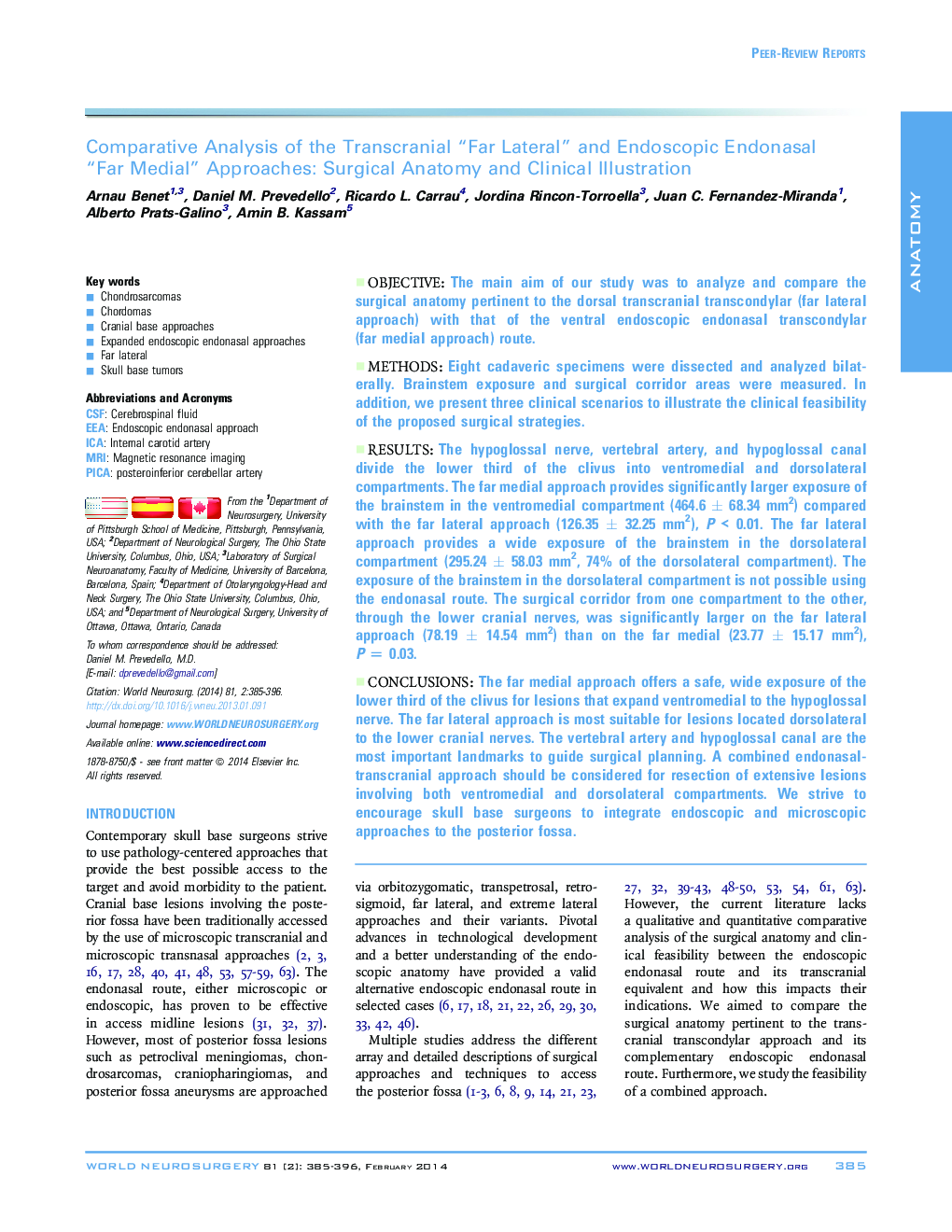| کد مقاله | کد نشریه | سال انتشار | مقاله انگلیسی | نسخه تمام متن |
|---|---|---|---|---|
| 3095731 | 1190916 | 2014 | 12 صفحه PDF | دانلود رایگان |

ObjectiveThe main aim of our study was to analyze and compare the surgical anatomy pertinent to the dorsal transcranial transcondylar (far lateral approach) with that of the ventral endoscopic endonasal transcondylar (far medial approach) route.MethodsEight cadaveric specimens were dissected and analyzed bilaterally. Brainstem exposure and surgical corridor areas were measured. In addition, we present three clinical scenarios to illustrate the clinical feasibility of the proposed surgical strategies.ResultsThe hypoglossal nerve, vertebral artery, and hypoglossal canal divide the lower third of the clivus into ventromedial and dorsolateral compartments. The far medial approach provides significantly larger exposure of the brainstem in the ventromedial compartment (464.6 ± 68.34 mm2) compared with the far lateral approach (126.35 ± 32.25 mm2), P < 0.01. The far lateral approach provides a wide exposure of the brainstem in the dorsolateral compartment (295.24 ± 58.03 mm2, 74% of the dorsolateral compartment). The exposure of the brainstem in the dorsolateral compartment is not possible using the endonasal route. The surgical corridor from one compartment to the other, through the lower cranial nerves, was significantly larger on the far lateral approach (78.19 ± 14.54 mm2) than on the far medial (23.77 ± 15.17 mm2), P = 0.03.ConclusionsThe far medial approach offers a safe, wide exposure of the lower third of the clivus for lesions that expand ventromedial to the hypoglossal nerve. The far lateral approach is most suitable for lesions located dorsolateral to the lower cranial nerves. The vertebral artery and hypoglossal canal are the most important landmarks to guide surgical planning. A combined endonasal-transcranial approach should be considered for resection of extensive lesions involving both ventromedial and dorsolateral compartments. We strive to encourage skull base surgeons to integrate endoscopic and microscopic approaches to the posterior fossa.
Journal: World Neurosurgery - Volume 81, Issue 2, February 2014, Pages 385–396